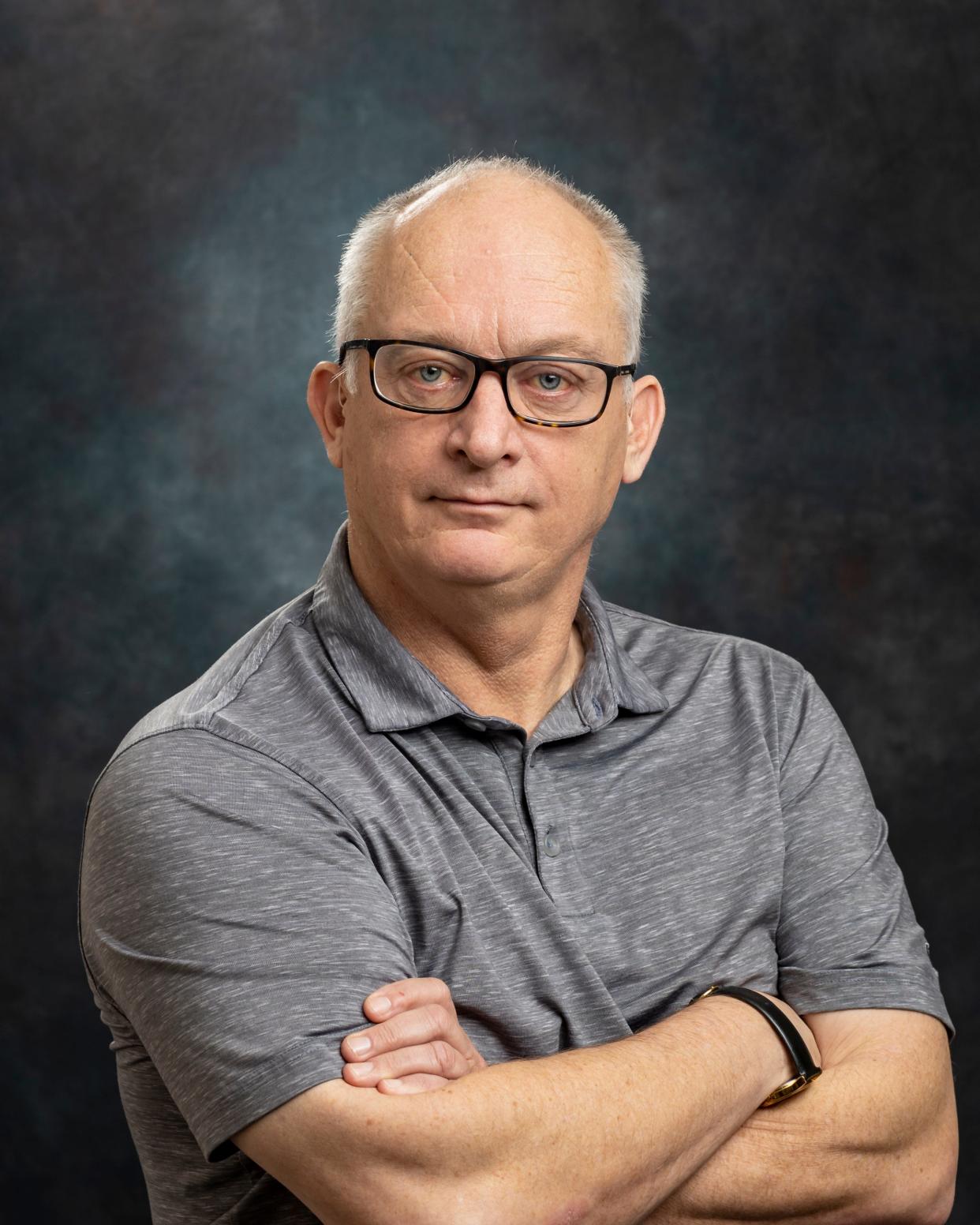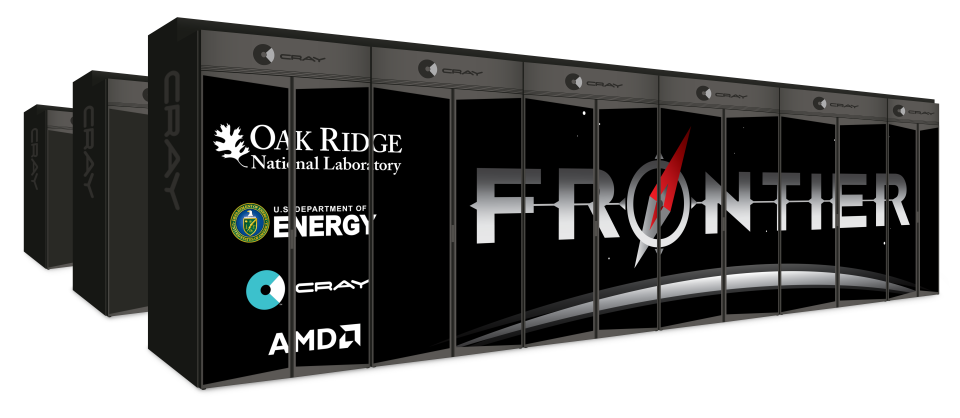Discovering effective drugs, vaccines by supercomputer

Supercomputers, like Summit and Frontier at Oak Ridge National Laboratory, are expensive. But so are tests of new therapeutic drugs and vaccines on people in clinical trials.
"The drug development time from the start of research to Food and Drug Administration approval of the drug for use in patients on average lasts about 15 years and costs $1.5 billion, and nearly $3 billion for cancer drugs,” said Jeremy Smith, Governor's Chair at the University of Tennessee and also director of the UT/ORNL Center for Molecular Biophysics (Department of Biochemistry and Cellular and Molecular Biology at UT Knoxville) at Oak Ridge National Laboratory.
“Nine out of ten times clinical trials fail,” he added in a talk to the Friday Lecture class of the Oak Ridge Institute for Continued Learning (ORICL). “We think that predictions using supercomputers could mean that fewer drugs fail. If that’s the case, hundreds of millions of dollars and years of research would be saved. Any slight gain is beneficial.”
He also spoke on some targets of his team’s supercomputer-guided research: the COVID-19 pandemic, resistance to antibiotics, osteoporosis and pancreatic cancer.
One-third of the cost of drug development, he said, is preclinical research by government, university and pharmaceutical labs, amounting to roughly $500 million. The rest of the cost is for three types of clinical trials of human patients mostly paid for by pharmaceutical companies. The first phase determines whether the new drug is safe; the second, whether it works (efficacy) and how much to take; and the third phase, whether it “will beat the present No. 1 drug” on the market now being prescribed for the same disease or disorder, Smith noted.
“It’s got to be better than what already exists to be approved," he said.
Smith explained that the supercomputers at ORNL can make up to a billion billion (quintillion) calculations per second to determine the relative strengths of the forces present during interactions between promising drug molecules and their targets, such as virus proteins and receptor proteins on human cells. Rapid calculations that employ the first principles of physics and are supplemented by artificial intelligence are identifying chemicals that, through their binding abilities, are good candidates to be developed into safe, effective drugs to meet today’s medical challenges.
COVID-19
In February 2020, several months before the COVID-19 pandemic lockdown, Smith’s team used Summit to predict which of 8,000 known drugs might bind strongly enough to the novel coronavirus spike protein to prevent it from entering a human cell and forcing it to replicate the virus.
"I had 50 news media interviews then, including one in Rolling Stone magazine where I managed to get my local classic rock band, the Grey Ridge Boogie Daddies, mentioned,” he said.
He noted that the reason for the focus on the known drugs for COVID-19 was that they have already been proven safe, eliminating the need for laborious studies. Some drugs have successfully been “repurposed” — that is, they were developed to combat one disease, but have been found to work well against a different one.
Smith said that Summit more recently was instructed to determine which of a billion compounds might be able to bind strongly to a key enzyme (catalyzing protein) in the cell and inhibit its ability to enable the SARS-CoV-2 virus to replicate itself and cause the COVID-19 disease.
According to Smith, Colleen Johnson at the University of Tennessee Health Sciences Center in Memphis has over the past two years tested many of the inhibitors and other chemicals highly ranked by Summit.
“She has many more to test, but she has found quite a few that stop the virus from killing human-like cells in a Petri dish,” Smith said.
“Some work just as well as Remdesivir, which must be injected, and rival the newer antiviral drugs on the market such as Pfizer’s Paxlovid oral pill.”
Resistance to antibiotics
Also, with the help of ORNL High-Performance Computing, Smith and his associates have identified chemicals that make bacteria less resistant to antibiotics. He explained that gram-negative bacteria have evolved to resist antibiotics in this way: they “overexpress,” or increase the number of, their “efflux pumps” made of proteins on the microbes’ cell walls. These pumps eliminate drugs designed to kill them.
“We found molecules that bind to the pumps so they don’t work anymore,” Smith said. “That means that antibiotics that used to not work because they were pumped out now are effective again in killing the bacteria.”
Osteoporosis
Ten million Americans have osteoporosis (weak, porous bones) and 43 million are at risk of developing it. Smith said that certain exercises strengthen bones, as well as muscles, because exercise helps new stem cells in bones (osteocytes) decide to become bone cells instead of fat cells, reducing the risk of osteoporosis that can easily lead to bone fractures. Working with researchers at the UT Health Sciences Center in Memphis, the ORNL-UT team found a molecule that binds to polycystin proteins in the body. Through calcium signaling, this combination of molecules coaxes each stem cell to become a bone cell, not a fat cell.

“This system works in mice, giving them stronger bones,” Smith added. “It could be good for people who have osteoporosis, or perhaps who don’t like to exercise, if it were to succeed in clinical trials.”
Pancreatic cancer
Noting there are four ways to treat cancer — surgery, radiation, chemotherapy and immunotherapy — Smith remarked that he and his collaborators are working on a vaccine to stimulate the body’s immune system to fight one of the worst cancers — pancreatic cancer.
Their work piggybacks on discoveries of ways to unleash the immune system that won the 2018 Nobel Prize in Physiology or Medicine. The two Nobel laureates found that the immune system can be encouraged to attack cancerous tumors. The ORNL-UT work focuses on the slight differences between cancer and normal cells.
“You have to sequence the tumor genomes and compare its sequence with that of healthy cells,” Smith said. “We calculated which of the differences in the tumor sequence might stimulate the immune system in fighting pancreatic cancer.”
The researchers determined that the DNA differences produce a part of a protein (a peptide) that potentially could stimulate the immune system and be part of a cancer vaccine.
The local scientists’ collaborators at the Lombardi Comprehensive Cancer Center at Georgetown University showed that in mice this peptide activates T cells, the part of the immune system that attacks cancer cells. Also, the peptide was found to drastically shrink pancreatic tumors in mice. The research results suggest that a pancreatic cancer vaccine for humans might someday become a reality.
This article originally appeared on Oakridger: Discovering safe, effective drugs, vaccines by supercomputer

